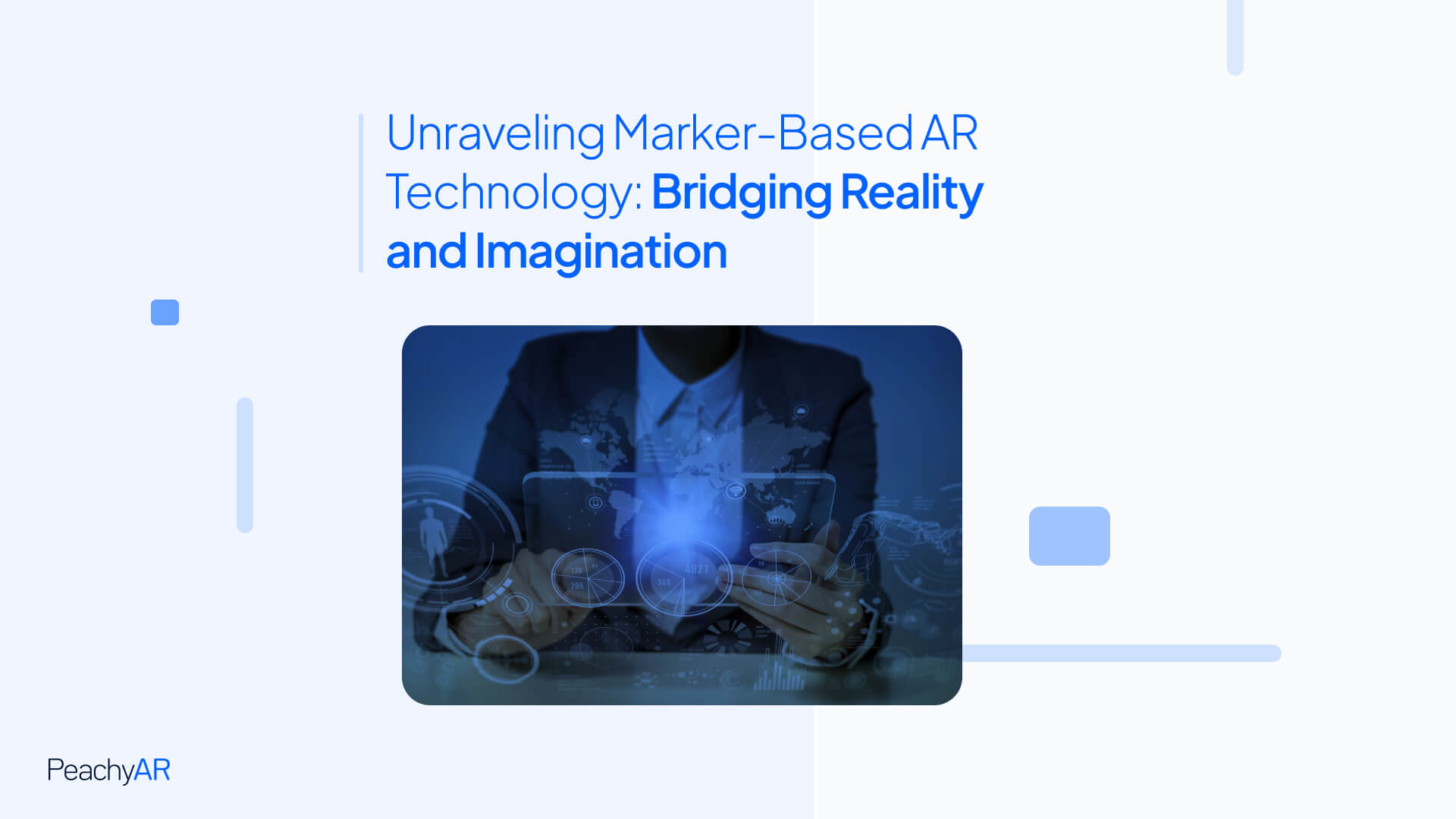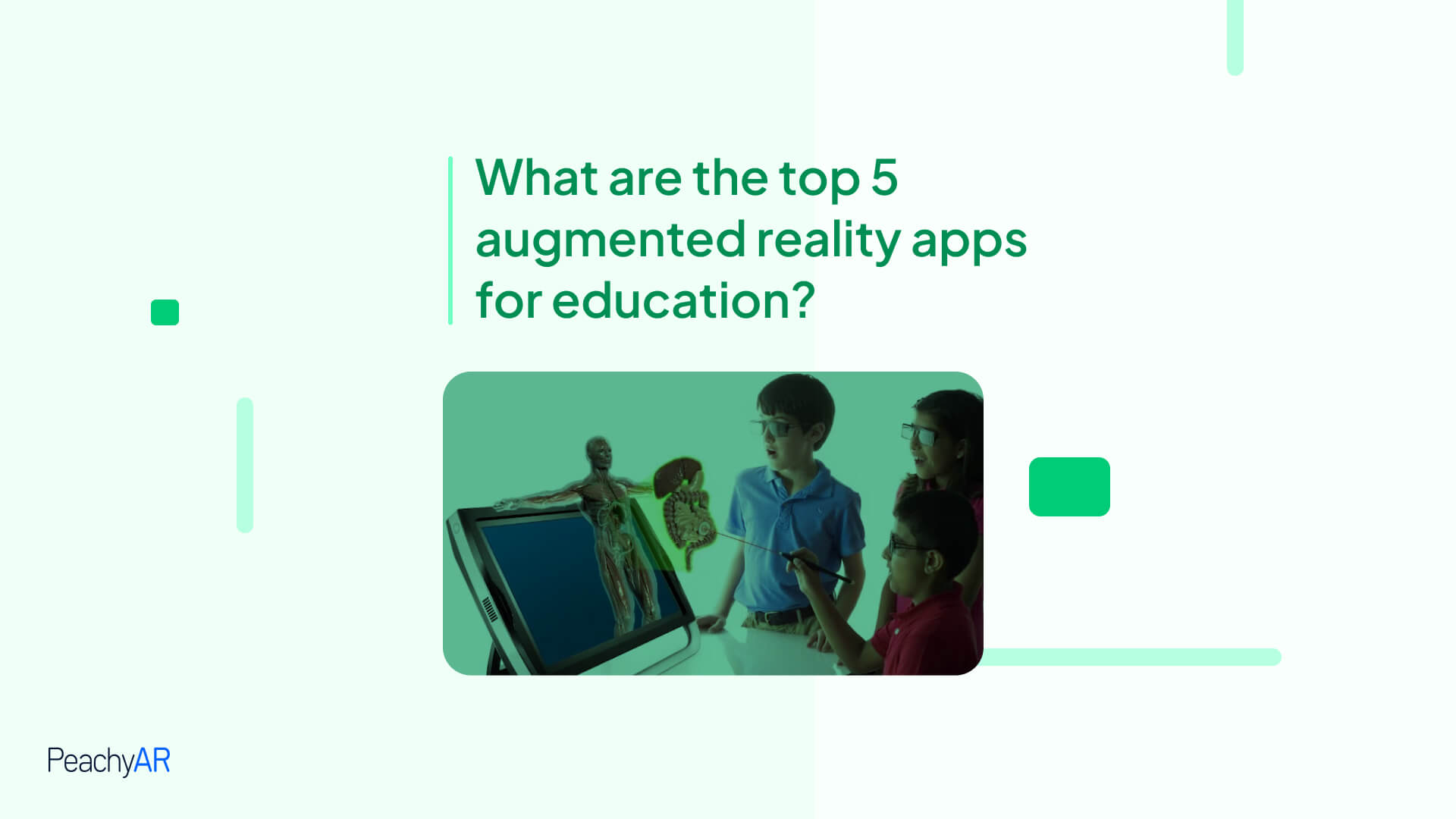Summary: Discover how Augmented Reality in the Classroom Enhances the Learning for Students; in this article, we are going to show you how you can benefit from Augmented Reality in the Classroom.
List of 10 Examples of Benefit Augmented Reality in the Classroom:
- Virtual Field Trips
- Language Learning
- Science Experiments
- Historical Reenactments
- Gamification of Learning
- Promoting Collaboration
- Encouraging Creativity
- Improving Retention
- Online AR and Web AR for Education
- Providing Accessibility
Augmented Reality in the Classroom: What is it?
Are you bored of traditional teaching approaches that fail to engage your students? Are you looking for ways to enhance your classroom experience and make learning more interactive? Look no further than augmented reality (AR) technology.
Augmented reality has become increasingly popular in recent years, and for good reason. It gives an exclusive opportunity to connect the physical and digital worlds, giving students an immersive and interesting educational experience. In this post, we’ll explore 10 examples of how AR enhances classroom learning.
From virtual field trips to interactive anatomy lessons, we’ll highlight the benefits of AR education and showcase how educators are incorporating this cutting-edge technology into their curriculum. So, whether you’re a teacher, student, or simply someone interested in the future of education, read on to discover the exciting ways AR is shaping tomorrow’s classroom.
Watch this video to see how it works:
1- Virtual Field Trips
One benefit of AR education is to make it possible for students to take virtual field trips and explore places they may not have the opportunity to visit in person. With online AR, teachers can create immersive experiences that take students on tours of historic landmarks and famous museums or even explore other planets. By using AR technology to enhance traditional field trip experiences, educators are able to offer students more opportunities for hands-on learning without ever having to leave the classroom.
2- Language Learning
Augmented reality for education can provide students with immersive language learning experiences, helping them practice their speaking and listening skills in a fun and interactive way. With AR, students can interact with virtual objects and characters in the target language, allowing them to practice vocabulary and grammar in a natural context.
AR can also provide instant feedback on pronunciation or grammar, helping students to improve their language skills more quickly. AR can be applied to develop interactive games or simulations that call for students to use the target language to finish a task or resolve an issue. As an opportunity for students to practice their language skills with a virtual partner or instructor, AR can also be utilized to conduct virtual discussions or conversations.
3- Science Experiments
Augmented reality can simulate complex scientific experiments, allowing students to explore and observe different phenomena in a safe and controlled environment. AR can be used to create virtual labs or simulations that allow students to experiment with different variables or conditions. Augmented reality for education can also be used to visualize the results of an experiment in real time, making it easier for students to understand and interpret data.
AR can be used to create interactive simulations of natural phenomena, such as the water cycle or the behavior of subatomic particles. AR can also be used to teach students about the principles of physics or chemistry, allowing them to interact with virtual molecules or elements in an immersive way.
4- Historical Reenactments
One benefit of AR education is that it can bring historical events to life, allowing students to experience essential moments in history interactively and engagingly. AR can be used to create virtual reenactments of historical battles or events, allowing students to explore different perspectives and understand the context of a historical moment.
AR in education can also be used to teach students about the social and cultural context of a historical period, allowing them to understand the beliefs and values of different historical figures or groups.
5- Gamification of Learning
The use of game design features in non-game environments is known as gamification, and augmented reality is making it possible to gamify learning in the classroom. By using AR technology for education, teachers can create games that engage students in fun and interactivity while reinforcing important concepts.
For example, an AR scavenger hunt can be used to teach students about a particular topic by having them search for and scan AR markers that reveal information or clues. As a Web AR, Math Alive uses AR to create interactive games that help students learn math concepts in a fun and interactive way. Totally, AR games can help students stay motivated and interested in learning and can also help teachers assess their progress.
6- Promoting Collaboration
AR technology can foster collaboration and teamwork in the classroom. By using AR-based learning activities, students can work together to solve problems or complete projects in a more immersive and interactive way. For instance, teachers can create AR scavenger hunts or puzzles that require students to work together to find hidden objects or solve a mystery.
As another example, an AR group project might involve students creating a virtual museum exhibit or designing a 3D model of a historical landmark. AR collaborative learning experiences can help students develop important teamwork and communication skills while also fostering creativity and innovation, encouraging them to learn from one another and develop problem-solving skills.
7- Encouraging Creativity
Augmented reality can also encourage creativity and innovation in the classroom. By using AR tools and software, students can create their virtual simulations, animations, or models. In fact, with AR technology, teachers can create personalized learning experiences for their students. By tailoring learning activities to each student’s needs and abilities, teachers can provide a more individualized and effective learning experience.

For instance, by using AR technology, teachers can create virtual simulations or experiments that allow students to explore different scenarios and learn from their mistakes. This kind of project-based learning can promote problem-solving skills, collaboration, and critical thinking. Additionally, students can share their creations with their classmates and receive feedback, fostering a supportive and collaborative learning environment.
8- Improving Retention
AR can help improve student retention of information by making learning more interactive and engaging. For example, instead of reading about a concept or theory, students can visualize it in a 3D virtual space, which can help them understand and remember it better.
This can be especially helpful for complex or abstract concepts that are difficult to grasp with traditional teaching methods. AR in education can also provide real-time feedback, helping students identify areas where they need to improve and reinforce what they have already learned.
9- Online AR and Web AR for Education
AR technology is not limited to the classroom setting. Online AR and web AR are emerging technologies that offer new opportunities for distance learning and remote education. Online AR and web AR can enable students to access AR-based learning activities from anywhere and anytime using their mobile devices or desktops.
This can provide more flexibility and convenience for students and teachers, allowing them to adapt to different learning environments and situations.
10- Providing Accessibility
AR technology can make learning more accessible for students with disabilities or special needs. For example, students with visual impairments can use AR to explore and interact with virtual models. In contrast, students with hearing impairments can use AR to access real-time captions or translations. This kind of accessibility can promote inclusion and equality in the classroom, allowing all students to participate fully in the learning experience.
Conclusion
As we’ve seen, augmented reality is changing the face of education in powerful ways. From bringing abstract concepts to life to providing immersive experiences that foster deeper understanding, AR is transforming the classroom as we know it. But the benefits of AR education don’t stop there. By engaging students more dynamically and interactively, AR can help to cultivate a love of learning that will last a lifetime.
And as technology continues to evolve, we can only imagine the new possibilities that will emerge. So, whether you’re an educator looking to spice up your lessons or a student eager to explore new horizons, it’s clear that AR is the way forward. Let’s embrace this exciting technology and unlock the full potential of education. The future of learning is here – are you ready to join the revolution?
Use the PeachyAR Platform to enhance learning for your students.






One Response